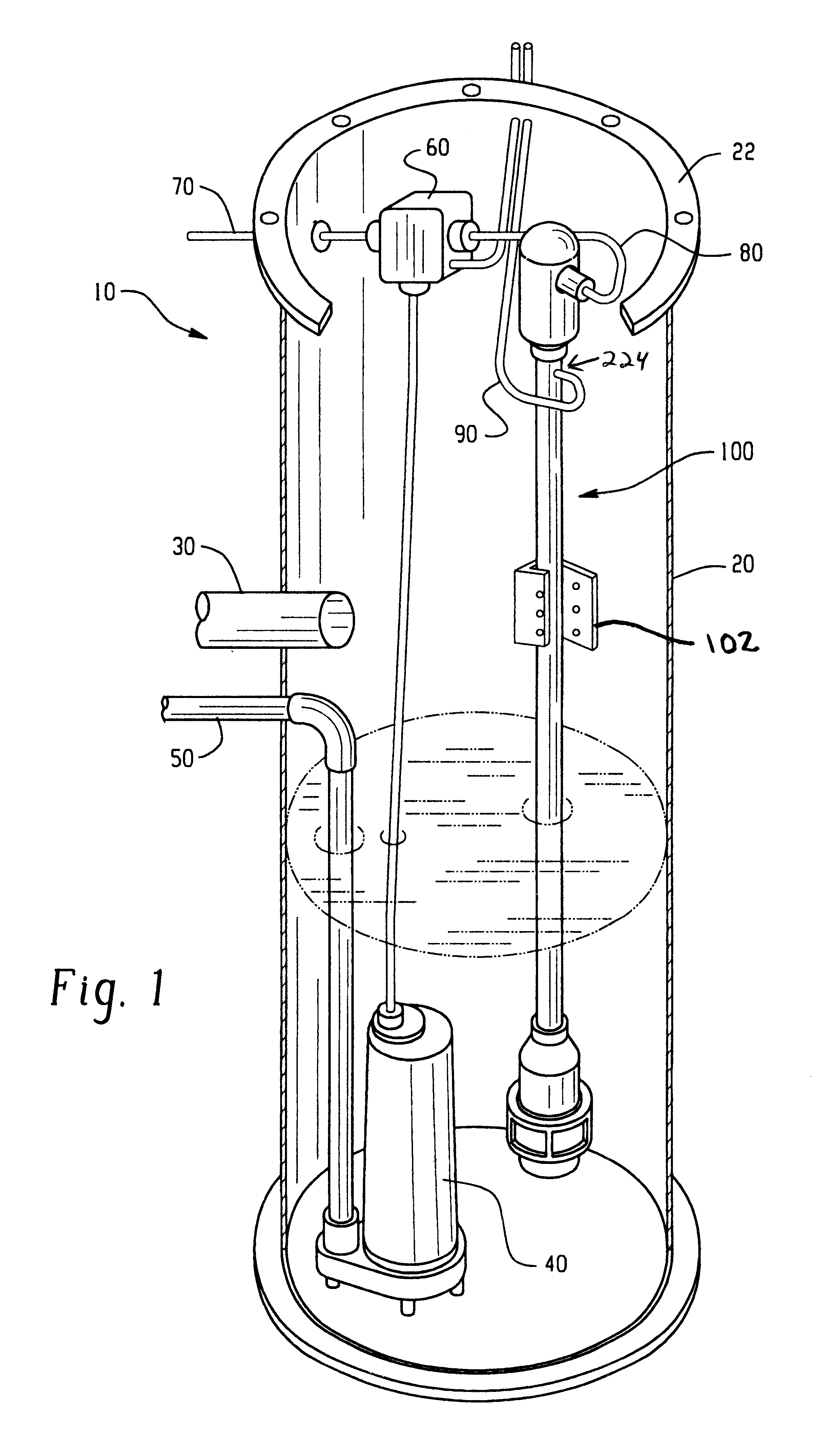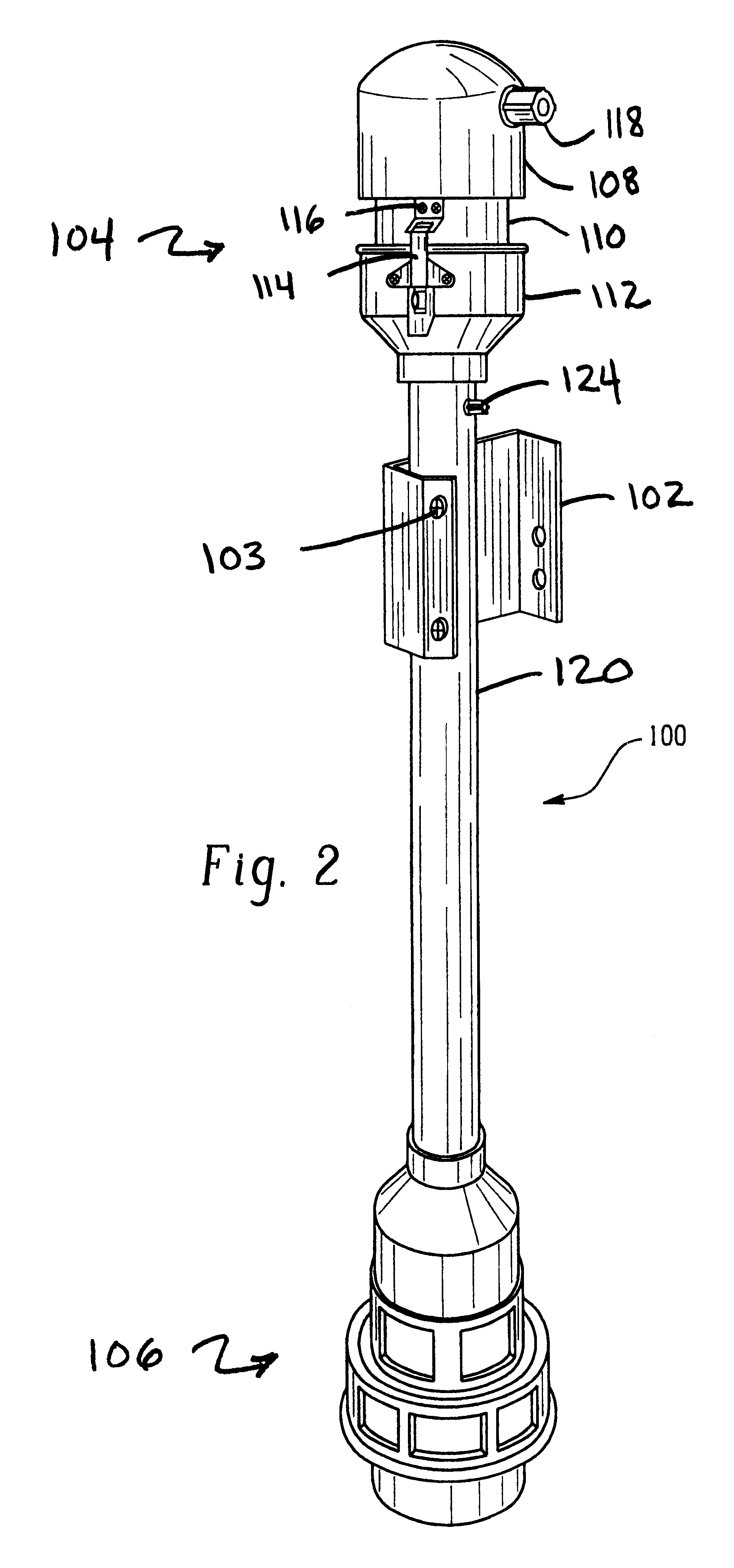Fluid level sensing and control system
a control system and fluid level technology, applied in liquid/fluent solid measurement, machines/engines, instruments, etc., can solve the problems of manual corrective function, many problems with these mechanisms, and inability to accurately detect the level of fluid, etc., to minimize the system cost, reliable, affordable and easy-to-use effects
- Summary
- Abstract
- Description
- Claims
- Application Information
AI Technical Summary
Benefits of technology
Problems solved by technology
Method used
Image
Examples
Embodiment Construction
Referring now to the figures, which are for the purposes of illustrating the present invention and not for limiting same, FIG. I depicts a liquid level control system 10 in accordance with an exemplary embodiment and the principles of the present invention. Included are a fluid-holding vessel 20, a fluid inlet line 30 for bringing fluidized material into vessel 20, a fluid pump 40 for discharging fluid material from vessel 20 via a discharge line 50, a typical junction box 60 having a power cord 70 for connecting with a power source (not shown), a switch cord 80, which can be any suitable length for connecting the pressure activated control apparatus, shown generally at 100, with the junction box 60, and a vent line 90 for venting air from within the pressure activated control 100 and as a source of fresh outside air thereto. The flange 22 radially extending outwardly from around the top of vessel 20 can be connected with a vessel lid (not shown) to make an enclosed fluid vessel. In...
PUM
 Login to View More
Login to View More Abstract
Description
Claims
Application Information
 Login to View More
Login to View More - R&D
- Intellectual Property
- Life Sciences
- Materials
- Tech Scout
- Unparalleled Data Quality
- Higher Quality Content
- 60% Fewer Hallucinations
Browse by: Latest US Patents, China's latest patents, Technical Efficacy Thesaurus, Application Domain, Technology Topic, Popular Technical Reports.
© 2025 PatSnap. All rights reserved.Legal|Privacy policy|Modern Slavery Act Transparency Statement|Sitemap|About US| Contact US: help@patsnap.com



